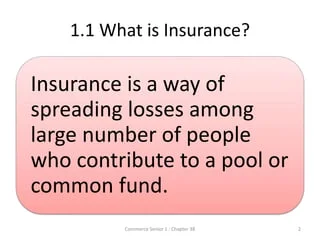The Best Guide To Pacific Prime
The Best Strategy To Use For Pacific Prime
Table of ContentsLittle Known Questions About Pacific Prime.Things about Pacific PrimeThe Single Strategy To Use For Pacific PrimePacific Prime Fundamentals ExplainedWhat Does Pacific Prime Do?

This is since the information were accumulated for a period of solid financial performance. Of the estimated 42 million individuals that were uninsured, almost regarding 420,000 (concerning 1 percent) were under 65 years of age, the age at which most Americans end up being qualified for Medicare; 32 million were grownups in between ages 18 and 65, about 19 percent of all adults in this age; and 10 million were youngsters under 18 years old, about 13.9 percent of all children (Mills, 2000).
These quotes of the variety of individuals without insurance are generated from the annual March Supplement to the Current Population Survey (CPS), carried out by the Demographics Bureau. Unless or else kept in mind, nationwide quotes of individuals without medical insurance and percentages of the population with various sort of insurance coverage are based upon the CPS, one of the most widely used source of estimates of insurance protection and uninsurance prices.
A Biased View of Pacific Prime

Still, the CPS is especially valuable due to the fact that it creates annual estimates relatively quickly, reporting the previous year's insurance coverage approximates each September, and since it is the basis for a regular collection of quotes for greater than 20 years, enabling for analysis of fads in insurance coverage gradually. For these factors, as well as the extensive use the CPS in other researches of insurance coverage that exist in this record, we depend on CPS estimates, with constraints noted.

The estimate of the variety of without insurance people increases when a population's insurance policy condition is tracked for several years. Over a three-year duration starting early in 1993, 72 million people, 29 percent of the U.S. https://trello.com/w/pacificpr1me_. population, were without insurance coverage for a minimum of one month. Within a single year (1994 ), 53 million individuals experienced at the very least a month without insurance coverage (Bennefield, 1998a)
Six out of every ten without insurance adults are themselves used. Working does boost the possibility that one and one's household members will certainly have insurance, it is not a warranty. Even participants of family members with two full-time breadwinner have almost a one-in-ten possibility of being without insurance (9.1 percent uninsured price) (Hoffman and Pohl, 2000).
Rumored Buzz on Pacific Prime
New immigrants represent a significant proportion of people without medical insurance. One evaluation has associated a considerable section of the current growth in the size of the U.S. uninsured population to immigrants that got here in the nation in between 1994 and 1998 (Camarota and Edwards, 2000). Current immigrants (those that came to the United States within the past four years) do have a high rate of being uninsured (46 percent), however they and their kids make up simply 6 percent of those without insurance policy across the country (Holahan et al., 2001).
The relationship between medical insurance and access to care is well established, as recorded later on in this phase. The connection between wellness insurance policy and health and wellness results is neither direct neither basic, a substantial medical and health solutions research study literature web links health and wellness insurance protection to enhanced access to care, far better high quality, and improved individual and population wellness condition.
Levels of evaluation for analyzing the effects of uninsurance. This conversation of medical insurance coverage concentrates mainly on the united state population under age 65 because basically all Americans 65 and older have Medicare or other public coverage. Moreover, it focuses particularly on those with no medical insurance for any kind of length of time.
Excitement About Pacific Prime
The problems faced by the underinsured are in some respects comparable to those encountered by the without insurance, although they are usually much less extreme. expat insurance. Uninsurance and underinsurance, however, involve clearly various plan problems, and the techniques for addressing them might vary. Throughout this research study and the five reports to adhere to, the primary focus is on individuals without health and wellness insurance coverage and thus no assistance in spending for healthcare beyond what is readily available with charity and safeguard establishments
Health and wellness insurance coverage is a powerful variable impacting receipt of treatment because both clients and medical professionals reply to the out-of-pocket rate of services - https://www.domestika.org/en/pacificpr1me. Health and wellness insurance policy, nevertheless, is neither required nor adequate to access to medical solutions. The independent and straight impact of health insurance policy coverage on access to wellness services is well established.
Others will get the healthcare they need also without medical insurance, by paying for it out of pocket or seeking it from companies that provide treatment free try here or at extremely subsidized prices. For still others, health and wellness insurance policy alone does not guarantee invoice of care due to various other nonfinancial barriers, such as a lack of healthcare service providers in their neighborhood, restricted access to transportation, illiteracy, or linguistic and cultural differences.
How Pacific Prime can Save You Time, Stress, and Money.
Official research study about without insurance populaces in the United States dates to the late 1920s and early 1930s when the Committee on the Cost of Healthcare created a series of reports regarding financing doctor office sees and hospital stays. This concern came to be significant as the varieties of clinically indigent climbed up during the Great Anxiety.